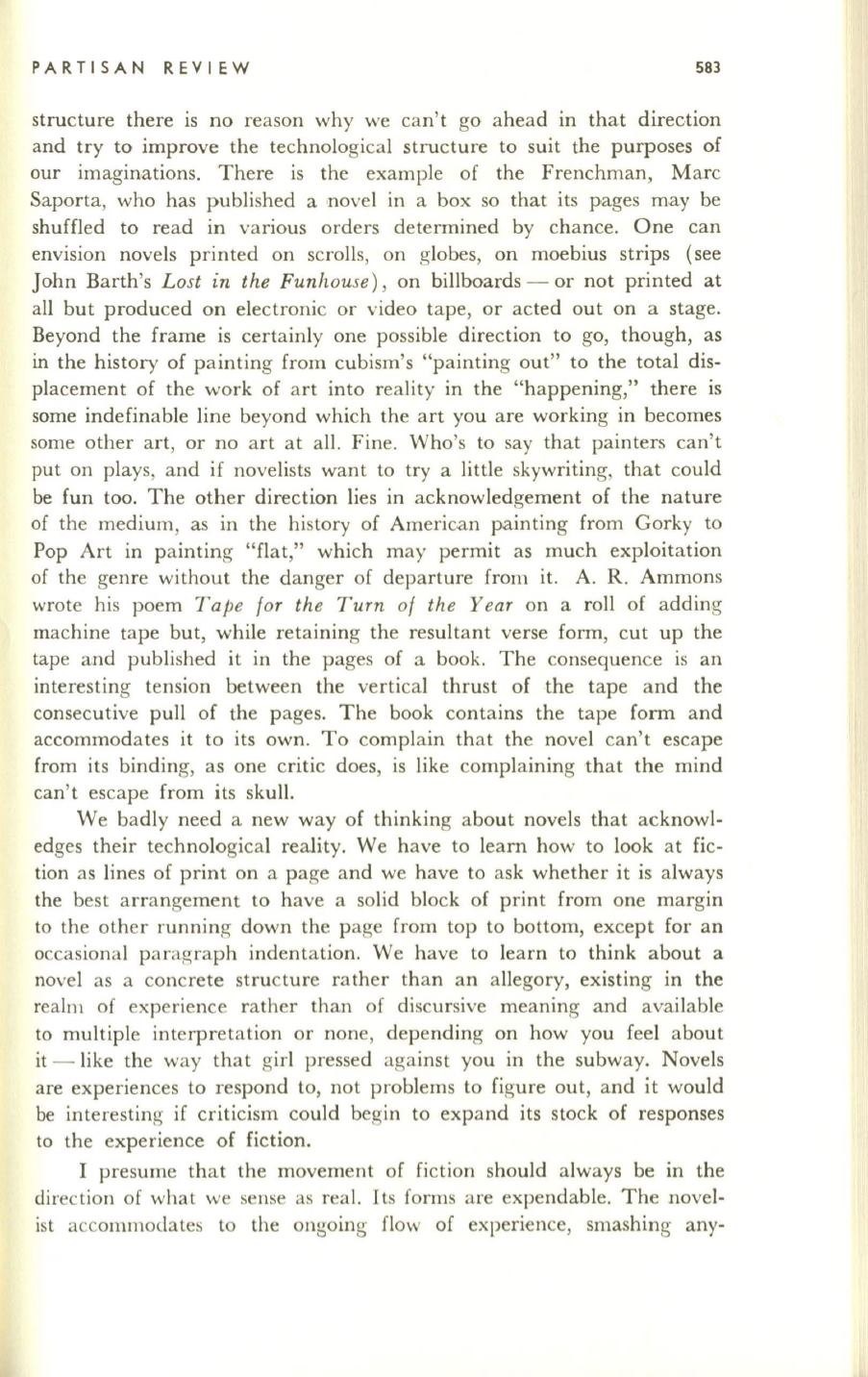
PARTISAN REVIEW
583
structure there is no reason why we can't go ahead in that direction
and try to improve the technological structure to suit the purposes of
our imaginations. There is the example of the Frenchman, Marc
Saporta, who has published a ,novel in a box so that its pages may be
shuffled to read in various orders determined by chance. One can
envision novels printed on scrolls, on globes, on moebius strips (see
John Barth's
Lost in the Funhouse) ,
on billboards - or not printed at
all but produced on electronic or video tape, or acted out on a stage.
Beyond the frame is certainly one possible direction to go, though, as
in
the history of painting from cubism's "painting out" to the total dis–
placement of the work of art into reality in the "happening," there is
some indefinable line beyond which the art you are working in becomes
some other art, or no art at all. Fine. Who's to say that painters can't
put on plays, and if novelists want to try a little skywriting, that could
be fun too. The other direction lies in acknowledgement of the nature
of the medium, as in the history of American painting from Gorky to
Pop Art in painting "flat," which may permit as much exploitation
of the genre without the danger of departure from it. A. R. Ammons
wrote his poem
Tape for the Turn of the Year
on a roll of adding
machine tape but, while retaining the resultant verse form, cut up the
tape and published it in the pages of a book. The consequence is an
interesting tension between the vertical thrust of the tape and the
consecutive pull of the pages. The book contains the tape form and
accommodates it to its own. To complain that the novel can't escape
from its binding, as one critic does, is like complaining that the mind
can't escape from its skull.
We badly need a new way of thinking about novels that acknowl–
edges their technological reality. We have to learn how to look at fic–
tion as lines of print on a page and we have to ask whether it is always
the best arrangement to have a solid block of print from one margin
to the other running down the page from top to bottom, except for an
occasional paragraph indentation. We have to learn to think about a
novel as a concrete structure rather than an allegory, existing in the
realm of experience rather than of discursive meaning and available
to multiple interpretation or none, depending on how you feel about
it -like the way that girl pressed against you in the subway. Novels
are experiences to respond to, not problems to figure out, and it would
be interesting if criticism could begin to expand its stock of responses
to the experience of fiction.
I presume that the movement of fiction should always be in the
direction of what we sense as real. Its forms a re expendable. The novel–
ist accommodates to the ongoing flow of experience, smashing any-


